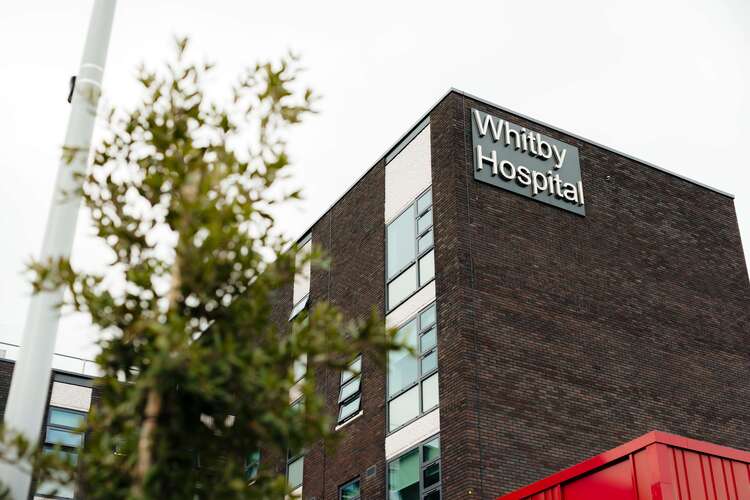Three ways NHS trusts can get ahead of patient demand
- 20 September 2023

If we do more of the same, waiting list numbers will continue to rise. Reducing unnecessary appointments is essential to elective recovery, writes Accurx’s Jacob Haddad
Limited funding, staff shortages and capacity, and a lack of basic technology infrastructure are impacting the effectiveness of outpatient services to meet growing patient demands. Despite a huge amount of effort to increase outpatient activity, waiting list numbers for consultant-led care in England are continuing to grow. This is ultimately worsening patient outcomes and satisfaction levels and lowering morale for trust staff.
As much as trust leaders need to focus on trying to reduce and prioritise the 7.7 million patients on current waiting lists, they also need to think ahead about how to set up staff in services to keep pace with tomorrow’s demand, so that the cycle is broken. Because ultimately, if we keep doing more of the same, waiting list numbers will continue to rise.
From Accurx’s work with trusts on elective recovery, I’ve seen three ways that this is being done successfully. They all have one thing in common – reducing unnecessary appointments. This is the single biggest thing that needs to be addressed in the way hospitals are managing outpatients, if we are ever going to achieve full elective recovery and increase hospital capacity.
1. Move all outpatients onto digital, triage-first PIFU
To combat wasted follow-up outpatient appointments in NHS trusts – which are typically scheduled without consideration of clinical need – Sir Jim Mackey, chief executive of Northumbria Healthcare Foundation Trust and NHS England’s elective chief, has said he wants to expand Patient-Initiated Follow-Up (PIFU) pathways on an “industrial” scale. This is in a bid to reduce the number of “pointless reviews” and give patients more control over their care by arranging follow-up care themselves.
Moving all outpatients onto PIFU will certainly help trusts tackle these challenges, but simply bolting PIFU onto existing workflows may hinder rather than help staff. Why? Because existing ways of managing PIFU in trusts largely approach it as a matter of patient-led appointment booking. Patients on PIFU pathways are automatically given an appointment when they seek care, without being triaged first to see if an appointment is genuinely needed. This only adds to the number of wasted follow-up appointments, meaning patients are still unable to access care when they need it, and workplace pressures continue to grow.
A more effective approach to implementing PIFU is to move away from the routine booking of in-person follow-up appointments by providing a PIFU route for all outpatients which is:
- Digital by default, but with a phone option
- Triages patients who initiate contact via PIFU, to determine the most appropriate way to resolve their needs
- Has automated backstops in the system to trigger follow up if a patient does not make contact for a prolonged period
Triage is widely missing from the conversation around PIFU today – and would make a huge difference in helping NHS trusts move through the elective backlog.
2. Make productivity gains by moving appointments to messaging
For as long as we can all remember, the NHS has operated on the basis of automatic, face-to-face appointments to deliver patient care. But we are increasingly seeing how this model is no longer fit for purpose and is holding staff back from making the productivity gains needed to manage elective demand.
I’m not saying that appointments aren’t needed – of course they are – but we need to shift the paradigm away from appointments exclusively and by default, to include messaging as a method of care delivery too.
For example, a clinical review for a patient referred to a dermatology service for a skin condition can be undertaken through reviewing images sent by a patient of their skin, without an appointment taking place. The best course of action can then be determined from there, which may be a prescription, advice through messaging, or indeed an appointment if it is needed.
We’ve been working with the thoracic team at University Hospitals of Leicester (UHL) to save 2-3 hours of clinician time per clinic, by replacing in-person appointments with SMS messaging to relay normal test results to patients. This digital approach to follow-up communication with patients has massively improved their experience of waiting to hear if signs of cancer have reappeared, whilst also removing travel time and disruption needed to attend an appointment. For staff, it means they can resolve patient requests quicker, save time, protect appointment slots, and provide a more responsive service. This naturally improves morale.
If these small examples were applied to all NHS trusts, we could make vital productivity gains and reduce the number of unnecessary appointments that currently take place, to support elective recovery.
3. Screen and prioritise patients at scale
In times of high demand and pressure, proactive care naturally falls on the back burner. But it doesn’t need to be a complicated thing for services to implement, and it is possible to see the results quickly.
In primary care, GPs use Accurx to send patients on their asthma list structured questionnaires with screening questions via SMS, which the practice uses to segment their list of patients with asthma and assign each cohort to a different intervention, based on clinical need.
In secondary care, trust staff send clinical questionnaires with the Oxford Hip Score to patients waiting for a hip replacement, so that they can seamlessly review, prioritise and triage, meaning the most urgent patient can be seen faster. This means resources can be allocated to those with the greatest need.
At UHL, 67 teams across the trust are using Accurx to send batch SMS messages to patients on waiting lists containing a questionnaire that asks them if they still require their overdue first or follow-up appointment. This enables the trust to:
- Remove patients who don’t need to be seen anymore
- Remove patients who don’t want care now but might need to be seen in the future if their symptoms deteriorate, and move them straight onto a PIFU pathway
This has helped the trust remove 20,000 patients from their waiting list (and counting) and avoid unnecessary appointments taking place.
As I said at the start, waiting list numbers will continue to rise if we keep doing more of the same. We need to start taking a hard look at current ways of working which lead to default appointment booking for patients, and how these can be adapted, using tech, to ensure services can keep up with tomorrow’s demand.
The elective recovery challenge speaks to a truth about today’s healthcare system – that patient care doesn’t just happen in face-to-face appointments but through other means, from SMS messaging to remote monitoring and video consultations. If more healthcare is delivered this way, it will create more clinical capacity across the system for patients who do genuinely need in-person care. This will make a world of difference for NHS trusts who are struggling to keep up with demand and find productivity gains, and it will be key to making the NHS more sustainable.





